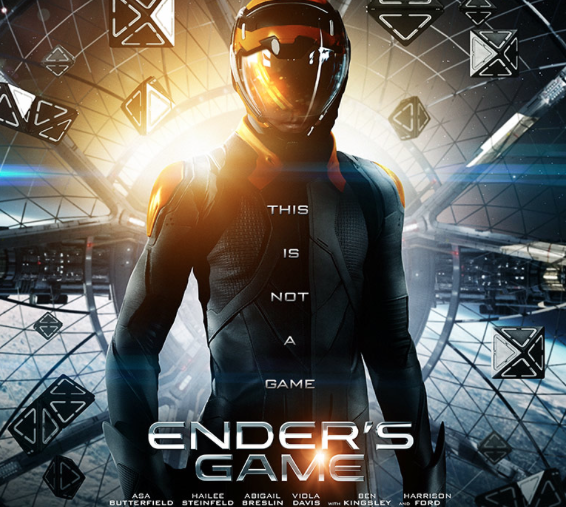“Ender’s Game” adaption incites mixed feelings from fans

photo courtesy of www.endersgamemovie.com.
November 10, 2013
The enemy’s gate may be down, but that doesn’t mean that’s the direction the film had to go, too.
On Oct. 31, a science fiction favorite was brought to life in Gavin Hood’s rendition of the futuristic classic, “Ender’s Game.” “Ender’s Game”—originally a short story by the same name—has garnered many awards included the 1985 Nebula award and 1986 Hugo Award, and has been a long-awaited addition to the science fiction film genre. Despite driving the theme of the book home from before the characters even emerged onscreen, the film did little to actually translate those to the big screen.
It was a known fact that, as with any movie adaption of a novel, the recent “Ender’s Game” movie was going to come with some concessions. Scenes have to be skipped, characters have to be given differing roles from what purist viewers would desire. However, this has always been the case with movies adaptions, and is no excuse for this movie to have fallen any shorter than other contemporary favorites such as “Blade Runner,” “Harry Potter” and “Lord of the Rings,” as it easily did upon release.
Some of the most affronting aspects of the film were the characters played by Viola Davis (Major Anderson), Hailee Steinfeld (Petra Arkanian) and Aramis Knight (Bean). In the film, Anderson transformed from a more stereotypical male meddler to a maternal figure. Even more egregiously, Petra was given the quintessential role in the final battle with the Formics by having her release the “little Doctor,” while Bean was reduced to just another launchie in Ender’s jeesh.
The minors characters, even, lacked the strength necessary for believability. As individuals, the actors who I can only assume represent Fly Molo and Hot Soup, Khylin Rhambo (Dink), Abigail Breslin (Valentine Wiggin) and Jimmy Pinchak (Peter Wiggin) all acted well, however there was a marked lack of the interpersonal relationships and conflicts between them and the main characters that gave the novel such credence.
On the upside, the visuals employed in the production of the film were stunning. The “Battle Room,” a nondescript location that served as little more than a gymnasium in the novel, became a phantasmagorical cage, its glittering glass walls a constant reminder of the vulnerable Earth below. Similarly, “the mind game,” another hallmark of the novel, was recreated in a way both creative and pleasingly reminiscent of the book.
Another of the highlights of the movie for both long-time fans of the book and newer inductees to the story was the final battle sequence. With Ender’s re-created jeesh sporting a few puzzling additions, the audience was introduced a blank room, whose computer simulated imagery flew far above expectations. The explosions were a powerful visual surrounding not only Ender, but the audience as well, and the final deployment of the “little Doctor,” was executed beautifully, if in an unorthodox manner.
A point upon which much of the audience seemed to be especially conflicted was the success of Asa Butterfield as protagonist Andrew “Ender” Wiggin. Ender is just that, the “end” of the Formic race, a little boy who became a unknowing general, however, his development in the movie seemed rudimentary. His swings between the extremes of desperation and anger became frustrating by the climax, and despite his seeming early perfection for the role, did not capture the physical duress or exhaustive mental combat under which Ender was truly put. Some of the earliest hints that indicated his inadequacy for the military side of the role were in his one-on-one fights with his childhood tormentors.
After the initial disappointment of Ender’s muted encounter with Stilson, a comeback from the parallel character of Bonzo Madrid was entirely unexpected. However, actor Moises Arias had a shockingly visceral performance that was a testament to the strength depicted by that scene, and others, in the novel. Despite Ender’s emotional breakdown over Bonzo’s body, the scene still managed to ring as one of the most accurate and moving parts of the film.
However, despite all aesthetic delights and character disappointments, the ultimate failure of “Ender’s Game” came in the finale. After a breakneck rush through Battle School with only a few skillfully highlighted moments from Ender’s time in Command School, I was ready to forgive all film indiscretions as part of the conversion process, and sit back to enjoy the conclusion on Eros. The following denouement of the live Queen was shocking. Because of that ending, one thing’s for sure. We won’t be seeing any more sequels, and if we do, they’ll be utterly changed from the books.
This movie wasn’t a killer. It just fell below expectations. Thoroughly.





